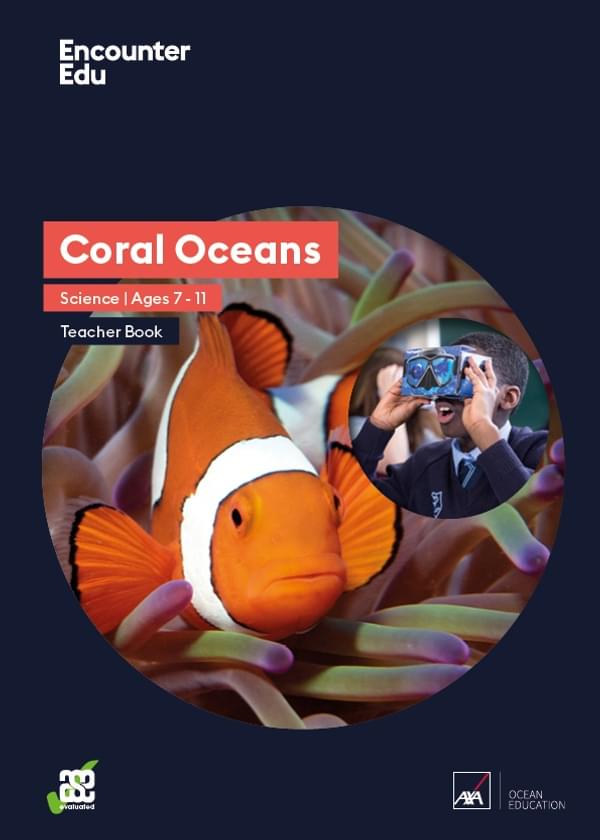Incredible edible polyp
This activity is a fun way of learning about the basic anatomy of the coral polyp, the tiny animal that creates the reef.
Ages 7+
20 minutes
10 minutes preparation
Part of:
AXA Ocean EducationDuring this activity, you will use some common food items to make a model of a coral polyp.
Activity Steps
- Pick up the section of banana or marshmallow. This is your coral polyp.
- Use the toothpick to make a hole in the top of the banana or marshmallow to represent the polyp’s mouth.
- Make six smaller holes around the outside of the banana or marshmallow. This is where the tentacles will go.
- Cut the gummy straws into six equal sections and stick them in the holes you have just made.
- Add the sugar sprinkles to the surface of the polyp to represent the algae (zooxanthellae).
- Place your polyp on the cracker or biscuit, using the jam as ‘glue’. This represents the polyp sticking to the seafloor.
- Stick pieces of the cracker or biscuit to the outside of banana or marshmallow with jam, to represent the corallite.
- You can make a coral colony by building several polyps and putting them together on the same plate.
- Once you have made your single polyp or colony, you can learn about parrotfish feeding habits, so that you can copy them.
- Parrotfish have no hands and so as a true coral predator, you will now have to try to eat the coral polyp without using your hands! This is much easier than copying another coral predator, the crown-of-thorns starfish, which ejects its guts over the surface of the coral to dissolve the polyps and coral structure, and then absorbs this gloop.
More ideas
Try this with a group of friends and see how many incredible edible polyps you can make to create a coral colony or reef. What else could you add to your incredible edible polyp to make it more realistic?
Safety guidance
- Check that there are no allergy issues. This is especially important if you are working with several children.
- Check the ingredients in the confectionery items. Marshmallows for instance, often contain beef gelatin.
- Participants should wash their hands thoroughly before starting the activity.
- Toothpicks may need to be used under adult supervision.
- Scissors should be child friendly and used under adult supervision.
Brought to you by

Celebrating


Science | Ages 7-11
Coral Oceans
These resources for ages 7-11 are based on the journeys undertaken by science teams taking part in the XL Catlin Seaview Survey expeditions. These resources present a complete scheme of work for the science classroom, covering core science and sustainability curriculum areas as well as enhancing students' creative and communications skills.

Science | Ages 14-16
Coral Oceans
This Coral Oceans GCSE Science unit of work challenges students to think about the impact they have on coral reefs as they study their importance, the consequences of threats and how to protect them. The cumulative approach to this unit means students will develop skills throughout to complete a decision-making exercise in the last lesson.
